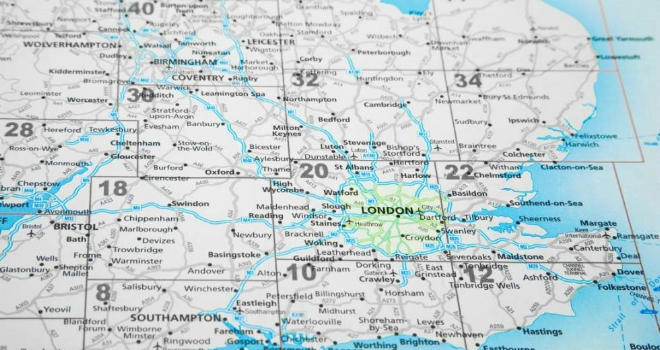
House prices in England and Wales continue to rise, albeit at a slowing rate over the last 9 months. In April 2015, the average price paid for a home was £275,961. This was an increase of £600, or 0.2% over the March figure and gives us the third new peak for house prices this year. At the same time, the 0.2% rise in April 2015 contrasts with the 0.6% rise a year earlier, giving some indication of the quieter market conditions currently being experienced.
On an annual basis, house price growth at the end of April was 5.3%, with the average price of a home being £13,840 higher than a year earlier. But, although house prices are still climbing, the annual rate of growth has also halved over the last eight months from 11.1% in August 2014 to 5.3% in April 2015.
In March, London experienced the largest reduction in house price growth of all the regions in England & Wales, to the extent that it is no longer the one with the highest annual house price inflation. The dominance of Greater London and the South East is waning, with the rates of house price inflation across all regions converging over the last six months.
The uncertainty factor of the Election itself and the threat of a Mansion Tax have now been removed and should strengthen the London market. However, the Chancellor’s 12% SDLT rate on properties costing in excess of £1.5 million remains in place. This may be one of the main causes of the current slowdown in property sales in prime central London
Richard Sexton, director of e.surv chartered surveyors, commented:
“House price growth has jolted awake again in April, climbing 0.2% (£600) in the past month, following what was a more lethargic period for property values. This has lifted the average house price across England and Wales to a new high this year, at £275,961. Annual price growth is still cooling, but mainly due to some recent negative monthly price rises. The direction of travel is clear and accelerating – and most importantly, momentum is picking up where it was lacking before.
“By contrast, annual price rises in London have fallen sharply. As a result, the capital has been knocked off its perch by the South East and East Anglia, who have now edged ahead of London with the strongest year-on-year increase in property values of all regions across the country, at 7.1% and 6.9% respectively. In contrast, annual growth in London has shrunk from 9.0% in February to just 6.8% in March 2015.
“This is the first time for nearly four and a half years that London has not been leading the pack in terms of regional house price growth, as higher stamp duty rates take some of the shine off high-end properties in prime central areas. In the City of Westminster, where the average property is now worth £1,382,965, prices dropped 5.2% during the month of March, as pre-election speculation of a Mansion Tax put a dampener on enthusiasm for the most exclusive London homes. London also saw the sharpest decline in completed home sales between Q1 2015 and the same period a year ago, falling 16.5%.
“Election uncertainty has now vanished, so arguably London’s unique property market could see a fresh boost. But this mansion tax effect is one for the very top of the market. Away from the prime hotspots, affordability is still the biggest factor holding back further price rises – owning a London home is still more of a dream than even an aspiration for millions.
“While property values in the capital have dipped 0.6% month-on-month, prices have still risen steadily in other areas – reaching new records in the South East, East Anglia, and East and West Midlands in March. The headstart that the housing market in London has traditionally exercised over the rest of the UK is retreating, and more of an even playing field is emerging instead. Average property values also hit new highs in Greater Manchester and Birmingham, as demand in other large cities continues to thrive away from the south-eastern extremities of the UK.
“Across the wider market, home sale completions made healthy headway with a 5% uplift in the month to April – in face of what was thought to be a looming political impasse. However, there was a slowdown when we look at the first quarter of 2015 as a whole, with Q1 witnessing a 10% year-on-year drop in the number of homes sold. Activity was certainly more restrained in the months running up to the General Election.
“Yet any past gloom only improves the prospects of a rebound in momentum. Now a clear majority government has been established, confidence has returned to the market with abandon, and buyers across the country can seize the golden opportunities on offer. With the election done and dusted, and demand certainly bolstered by extensions to schemes like Right to Buy, the only major snag in the fabric of the housing market remains the fundamental flaw of a lack of new homes.”





